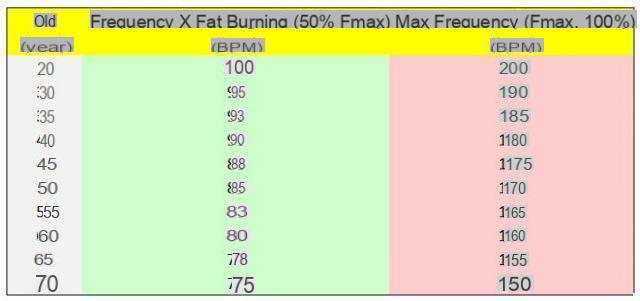
L'cardio exercise it is an integral part of a complete fitness routine because it generates several benefits among which: improvement of heart, circulatory and pulmonary functions, mood and sleep quality, strengthening of muscles and reduction of the risk of heart disease, hypertension and diabetes.
The cardio activities to choose from are different, but it is essential understand if there is an ideal frequency to carry them out.
What is cardio activity
With the term cardio or aerobic exercise, we mean a physical activity that involves a high level of energy expenditure. When you do it, your muscles need more blood and oxygen than when they are at rest and this causes the heart and lungs to work harder and, over time, become stronger.
Cardio or aerobic exercise includes many types of activitiesto. Some, like walk, can be done at a moderate pace while others, such as running, cycling uphill, jumping rope or swimming, to a more intense one.
In addition to individual activities, they also fall into the cardio category kickboxing, spinning, Zumba, dance, basketball, soccer and tennis.
What is the recommended amount of cardio exercise
According to the World Health Organization, regardless of the type of cardio exercise chosen, to reap the maximum benefits it shouldn't be played for less than 10 minutes at a time.
If you opt for a moderate intensity workout, such as a brisk walking, 30 minutes a day they can lead to a number of advantages, which are nevertheless achieved even breaking that time into multiple sessions, such as taking two 15-minute walks or three 10-minute walks each day.
On the other hand, there is no recommended maximum limit for the amount of cardio exercises to do on a daily or weekly basis although, especially if that choice is quite demanding, skipping a day or two a week can help regain energy and avoid injury and burnout.
Is it safe to do cardio every day?
Via a 2012 study published in the British Journal of Pharmacology, researchers found what to do up to 60 minutes of cardio exercise a day is safe and particularly suitable if the goal is weight loss.
However, there are symptoms indicators that you are exaggerating:
- persistent muscle soreness,
- painful joints,
- difficulty in carrying out exercises that are always done with ease,
- decreased interest or enthusiasm for exercise,
- worsening of sleep quality.
To avoid them, the frequency of training should be evaluated on each person individually, also based on the level of physical fitness and general health conditions.
If you have not exercised in some time or are recovering from an injury or illness, it is best to consult with your doctor about how and for how long to safely start a cardio routine. Same thing if you have heart disease, arthritis, breathing or joint problems.
Pros and cons of doing cardio every day?
Exercise daily cardio has pros and cons and it is important to know them before trying your hand at a fitness routine that includes it.
Advantages
Doing cardio activities every day:
- improves heart function and cardiovascular health,
- helps you sleep better at night, especially if you train early in the day,
- improves blood flow and helps manage high blood pressure,
- stimulates the use of fat by the body as an energy source, and this can lead to weight loss,
- improves lung function and general respiratory health,
- improves mood,
- increases the energy level,
- reduces stress.
Possible disadvantages
On the other hand, there are possible negative events related to daily cardio training, pressing especially in the case of a poor diet or insufficient recovery:
- physical and mental fatigue,
- increased appetite,
- loss of muscle mass,
- injury from overtraining or repetitive stress.
Does doing cardio every day help you lose weight?
Weight loss occurs when you consume more calories than you ingest, and cardio exercise is a great way to facilitate this process.
30 minutes of brisk walking can burn around 140 calories.
According to a 2017 study, published in the New England Journal of Medicine, the best strategy for weight loss could be that of combine cardio and strength training, carrying out the first for 3-4 days a week and the second for 2 or 3.
Safety Tips
Before starting a cardio routine, evaluate your fitness level and think about a realistic training program.
- If you are a beginner and used to a sedentary lifestyle, start with short, low-intensity workouts and raise the bar as time goes by.
- Warm up for a few minutes before starting.
- Do an anti-fatigue stretcking at the end of the workout.
- Skip a workout if you are unwell or low on energy.
- Hydrate yourself by ingesting fluids before, during and after training.
- Try to avoid running or jogging on uneven ground which could increase the risk of an ankle injury or fall.
- Stop if you feel sudden pain or have difficulty catching your breath.


























